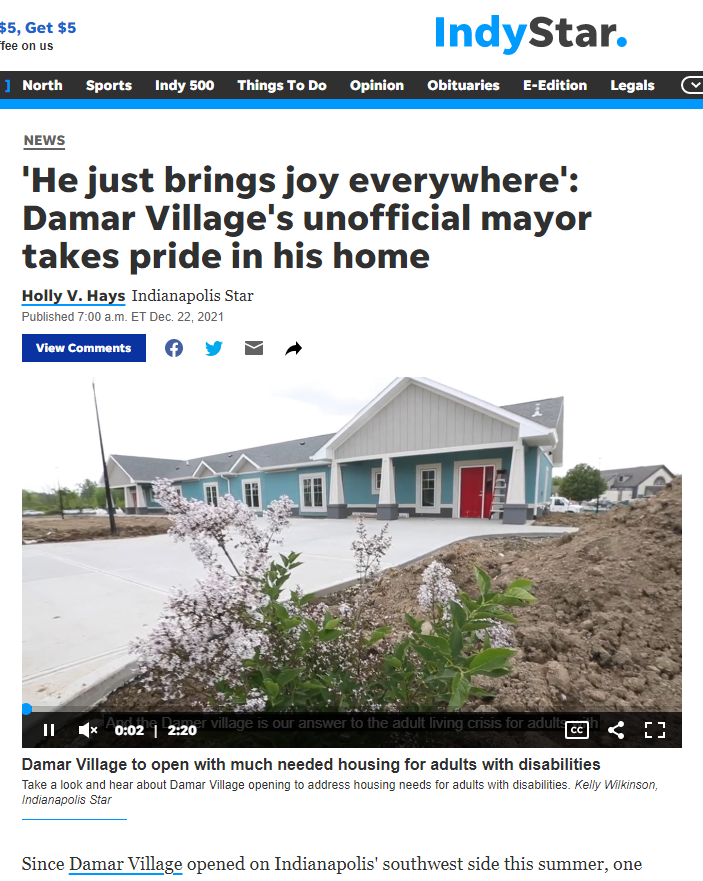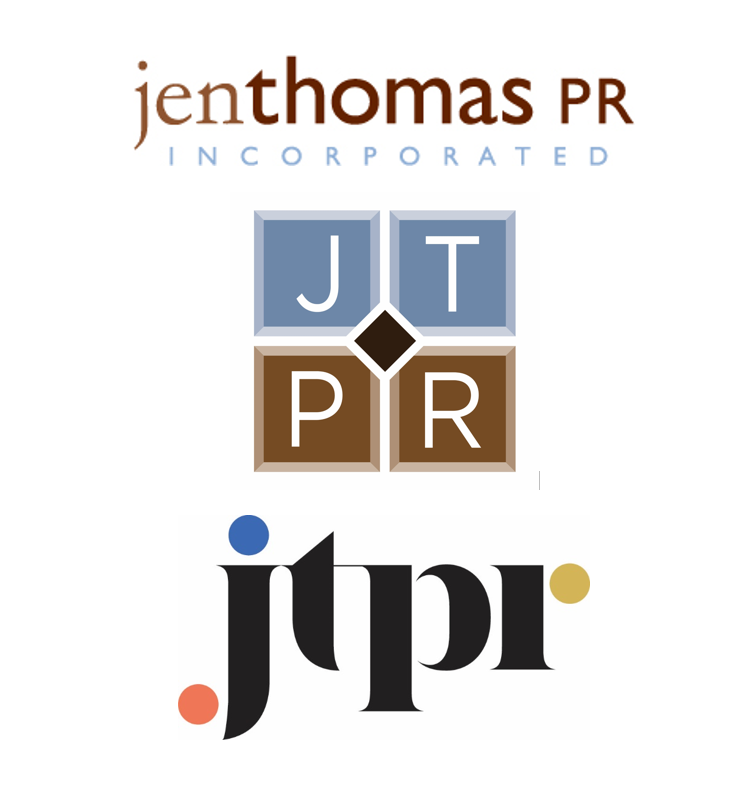Damar Village's unofficial mayor 'brings joy everywhere'

The following originally appeared in the IndyStar on Dec. 22, 2021. To read it in the Star, click here.
By Holly V. Hays, Indianapolis Star
Since Damar Village opened on Indianapolis' southwest side this summer, one resident has become the neighborhood's "unofficial mayor."
Most nights around dusk, Robert Burcham walks through the complex, which serves Hoosiers with developmental and intellectual disabilities, checking to make sure everyone's wreaths are lit, ensuring the holiday spirit flows throughout the neighborhood.
It's just one of the roles he's assumed as the complex's unofficial mayor, a title Burcham is quick to laugh off. But this quasi-leadership position came naturally to Burcham, said Jim Dalton, Damar Services president and CEO, who said the 42-year-old has a knack for uniting those around him.
While the title doesn't come with official responsibilities, Burcham can often be found walking through the complex, making sure litter is picked up and checking in with his neighbors.
“He’s such a lovable guy," Dalton said. "We love the way that he uses his skills and influences people positively. He’s always in such a positive mood.
"He just brings joy everywhere."
Creating a community for Hoosiers with disabilities
Damar Village is one of the 54-year-old organization's latest efforts to expand services to Hoosiers with intellectual and developmental disabilities.
Each unit includes four bedrooms, two bathrooms, a kitchen and shared living space, and adjustments like grab bars and reinforced walls can be made to meet an individual's needs.
The 13-acre complex, adjacent to the agency's main campus on the city's southwest side, will eventually provide housing to 120 adults with disabilities. The current capacity is 51, Dalton said, and all existing units have already been spoken for.
Dalton said the organization hopes to break ground on the next phase of the project in 2022, which would create 100 additional opportunities for housing.
The goal is to create a space where residents can feel safe, valued and respected. They want to build a community for Hoosiers who may not have found that elsewhere.
“A lot of the people that we serve come from bad situations, bad places," Dalton said. "Even though they’re living in the community, they’re really ostracized in the community."
Burcham said, in his experience, the complex has succeeded in creating that feeling of community. One distinction he wanted to make for those otherwise unfamiliar with the complex is that it doesn't have a clinical, institutional feeling, where residents are isolated from each other.
“It’s not like that,” he said. “That’s what I like, is the freedom to be able to walk outside, interact with people, interact with the staff.”
'We all need to be more like Robert'
When he's not working — Burcham just celebrated his 25th work anniversary at Burger King — or strolling through his neighborhood, Burcham can sometimes be found in his apartment's spare bedroom, where he keeps his train sets.
It's a hobby his father had as a child, and one Burcham said he's come to love over time, too.
His current set-up includes at least two locomotives, including a scale model he says may be his favorite. Because the scale pieces are larger, they often include more detail, he said: "I get more joy out of (it)."
"I have cerebral palsy and scoliosis,” he said, “and it’s much harder for me to put a smaller train (on the track) than it is a bigger train.”
So, it's no coincidence that when volunteers set up the neighborhood light display, the piece placed nearest to Burcham's apartment, visible just outside his living room windows, was a train.
"There was a little strategy," in the placement of that particular piece, Dalton admitted.
When asked what he was most thankful for this holiday season, Burcham said he's excited for the first Christmas in his new apartment.
“I’m grateful for what I have," he said, "and where I’m living.”
There are some people you meet, Dalton said, that can offer you valuable lessons in life — if you're open to learning from them. Burcham, he said, is one of those people. He sets an example for others just by engaging with and appreciating the world around him.
"We all need to be more like Robert,” Dalton said.
Learn more about Damar Services and Damar Village
To learn more about Damar Village, visit damar.org/damarvillage.To learn more about all the services Damar offers, visit damar.org.
You can reach IndyStar reporter Holly Hays at holly.hays@indystar.com. Follow her on Twitter: @hollyvhays.

